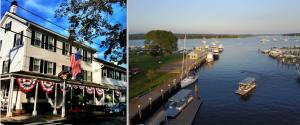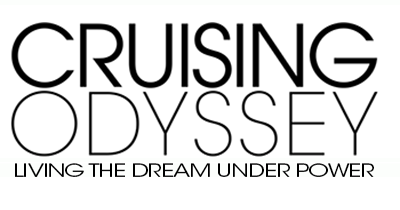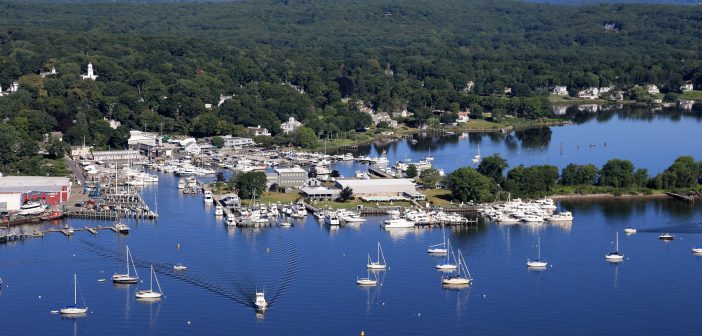
A quintessential New England small town, Essex, Connecticut, six miles up from Long Island Sound on the Connecticut River, is the home of white picket fences, American flags, and a historic past. It also is a boating mecca. Indeed, Essex has more transient slips for boats than it has parking spaces for cars.
If you’re heading east or west on the Sound, Essex is easy to get to (just keep an eye out for the well-charted sandbar off the entrance that deterred British warships from entering the river during the War of 1812). Just up the river, past the Saybrook breakwater, past two large full-service marinas to port, you’ll go under the Amtrak train bridge; it has a vertical clearance of 19 feet, so if you need more, call Channel 13. After that, just follow the channel up to Essex; you’ll see the mooring fields first.
Essex has always prospered because of its location – the coves along the river are protected, and the river itself flows up to the Connecticut heartland. The Algonquin Indians flourished here until 1590, when the more-warlike Pequots forced them out.
The first known European in the area was Adriaen Block, who arrived in 1614, coming down from what is now Block Island to the east. Essex prospered as a farming and fishing center, and then as one of the major boat-building towns in the U.S. Before the War of 1812, Essex ship-builders produced dozens of privateers, which attacked British ships in the Atlantic and the Caribbean.
In retaliation, the British decided to raid the town. On the night of April 7, 1814, British warships anchored off Saybrook, since they couldn’t clear the sandbar, and sent 137 marines in rowboats up the river.
They arrived in Essex at 3 a.m., and their captain told the terrified villages that he would not attack them if they left his men alone. The Brits then burned 27 boats before rowing back down the river. Essex now holds an annual Burning of the Ships Parade, complete with period uniforms and fife and drum corps, on the second Saturday in May. The parade, of course, goes down the appropriately named Main Street.
One of the largest attractions there, the Griswold Inn (pictured above), has been feeding and housing guests since 1776. “The Gris,” as it is known locally, is indeed an institution. Esquire says its taproom is one of the best in America, and the inn also houses a major collection of marine art. Just up the street the Black Seal, which is much more casual, has a great bar too, and basically is a pub with a nautical décor. And just about across the street from the Gris, the Essex Coffee and Tea Company offers, well, coffee and tea, and local artwork on the walls.
At the foot of Main Street, the Connecticut River Museum has great exhibits on shipbuilding and local geology plus a full-size replica of the Turtle, the first American submarine, built in 1776.
Essex has three major marinas, all within just a few blocks, or less than five minutes’ walk, from Main Street. The first is the Brewer Dauntless Marina, with 42 slips and 55 moorings. Then comes the Essex Island Marina, with 125 slips, a swimming pool and grilling area. It is indeed on an island; you take a 30-second ferry ride over a 20-yard passage to get to the mainland (see the photo above). This is a terrific place to stay; I’ve tied up there many times with my family.
Then there’s the Brewer Dauntless Marina and Shipyard, with 108 slips, also a swimming pool, and major repair facilities.
You shouldn’t leave Essex without heading up the river another mile and dropping the hook in Hamburg cove on the eastern shore; it’s one of the most protected and laid-back gunkholes on the East Coast. Read more:
https://vacationidea.com/connecticut/best-things-to-do-in-essex-ct.html




